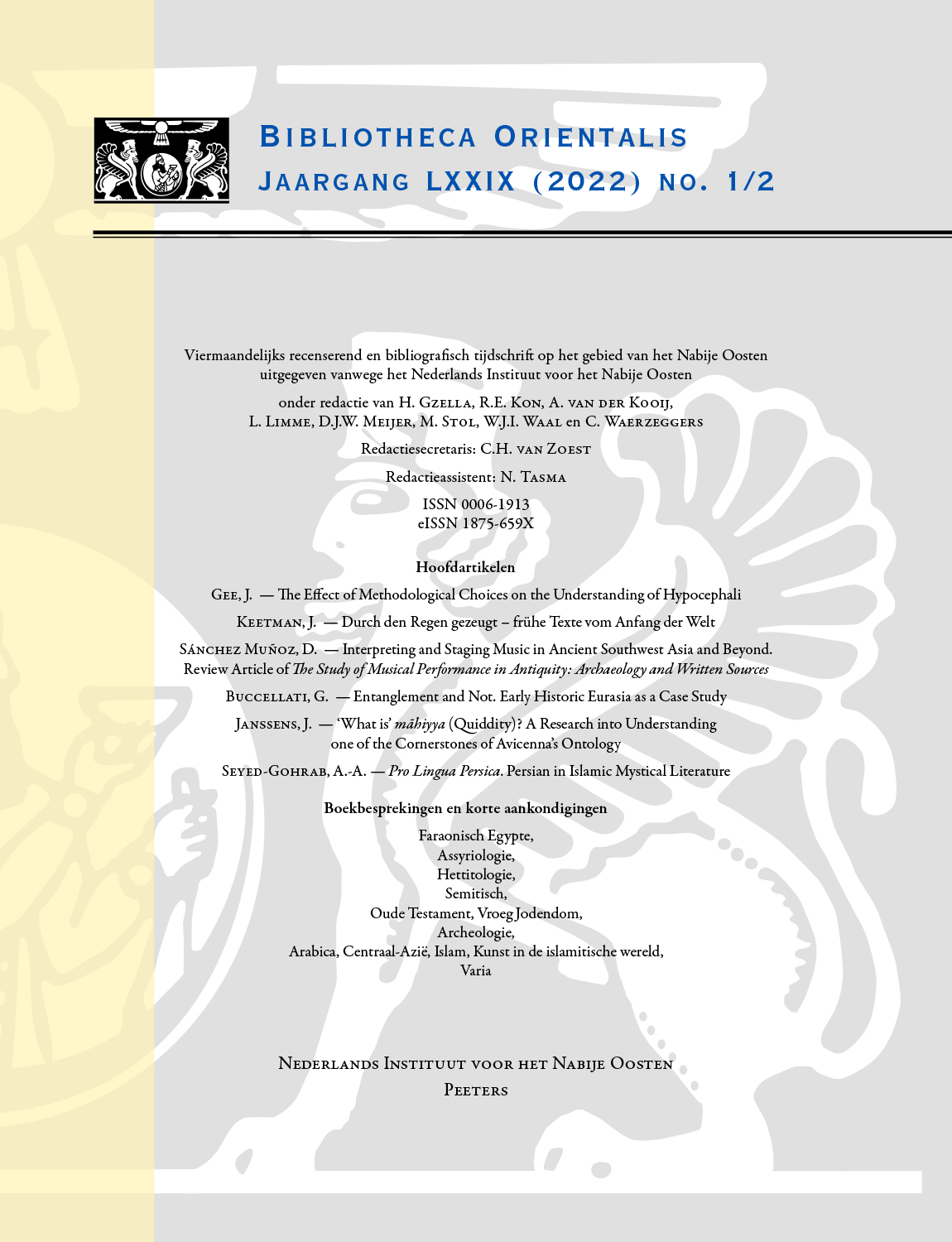 previous article in this issue previous article in this issue | next article in this issue  |

|
Document Details : Title: 'What is' māhiyya (Quiddity)? Subtitle: A Research into Understanding One of the Cornerstones of Avicenna's Ontology Author(s): JANSSENS, Jules Journal: Bibliotheca Orientalis Volume: 79 Issue: 1-2 Date: 2022 Pages: 65-74 DOI: 10.2143/BIOR.79.1.3291009 Abstract : Although Avicenna is famous for his distinction between essence and existence — which implies a clear distinction in all created beings between their māhiyya (quiddity) and existence, his precise understanding of quiddity is far from easy to grasp. Some of his lost works, or parts of works, might have contained additional clarifications, but this remains highly speculative. More relevant is undoubtedly the study of the possible historical sources of Avicenna’s doctrine, both Greek and Arabic (both falsafa and kalām), although it remains difficult to evaluate in a precise way which is the degree and significance each of these sources had on Avicenna’s view of quiddity. Similarly, the examination of the different interpretations that have been expressed by many interpreters in the post-Avicennian Arabic-Persian tradition, the medieval Latin and the contemporary Western world, is clearly not devoid of interest, but it also proves to be complicated, not at least because some of these interpreters were eminent scholars who had their own agenda. When Janos ascribes to Avicenna the idea of quiddity as having a distinct ontological and epistemological status, he presents an entirely innovative interpretation, which may look at first sight suspicious. However, his interpretation highly gains in plausibility in view of his extensive argumentation in favor of the existence of ‘pure quiddity’ in the mind and in the extramental world, and the existence of the ‘pure quiddities’ in God. Although several terminological or doctrinal points clearly need further investigation, as shown in this paper, Janos’ thesis deserves serious attention. |
|
